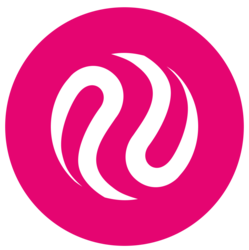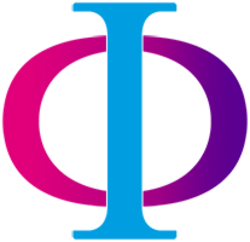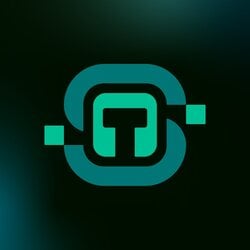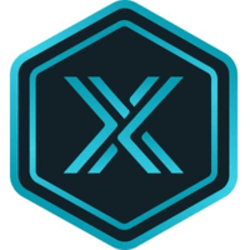Through an engaging narrative, we will delve into the challenges faced, the solutions offered by dystopian literature, implementation steps taken, and the resulting metrics that highlight their success.
The Challenge
[User/Company] was facing multiple challenges that inhibited its growth and innovation. Some of the primary issues included:
- Declining employee morale and engagement
- Resistance to change within the organization
- Difficulty in fostering innovative thinking
- Challenges in strategic planning and foresight
These obstacles not only affected productivity but also stifled creativity and collaboration among team members. Some key novels included:
- 1984 by George Orwell: A tale of surveillance and control that highlights the importance of personal freedom and privacy.
- The Handmaid’s Tale by Margaret Atwood: A story of gender roles and societal structure that prompts discussions about equality and ethics.
- Brave New World by Aldous Huxley: A critique of consumerism and technological overreach that encourages reflection on the balance between progress and humanity.
By analyzing the themes and scenarios presented in these novels, the team at [User/Company] aimed to foster innovative thinking and develop strategies that were both creative and resilient.
Implementation Steps
The implementation of insights derived from these dystopian novels involved several strategic steps:
- Team Workshops: Organize workshops where teams discuss the themes of selected novels and how they relate to current market conditions.
- Scenario Planning: Develop potential future scenarios based on the lessons learned from the novels, allowing teams to brainstorm creative solutions.
- Creative Problem-Solving Sessions: Encourage cross-departmental collaboration to tackle existing challenges using insights gained from the novels.
- Feedback Loops: Establish a system for ongoing reflection and adaptation based on the outcomes of the creative initiatives inspired by the novels.
Results & Metrics
The application of insights from popular dystopian novels yielded several positive outcomes for [User/Company]. Some of the key outcomes included:
- Increased employee engagement scores by 25% within six months.
- Improved collaboration across departments, resulting in a 30% faster project turnaround.
- Enhanced creativity and innovation, leading to the introduction of three new products within a year.
- Positive feedback from employees regarding the new culture and mission alignment.
Lessons Learned
The experience taught [User/Company] valuable lessons that can be applied in the future:
- The Power of Storytelling: Narratives from literature can inspire and motivate teams to embrace change and think critically.
- Engagement Through Relevance: Relating challenges to familiar stories makes it easier for employees to connect and engage with solutions.
- Cultivating a Learning Environment: Encouraging continuous learning through literature fosters creativity and innovation.
- Adaptability is Key: Organizations must remain flexible and open to new ideas to thrive in a constantly evolving landscape.
In conclusion, by leveraging the lessons from famous dystopian novels, [User/Company] not only addressed its immediate challenges but also cultivated a stronger, more engaged workforce ready to tackle the future.
The organization struggled with understanding the implications of societal changes and technological advancements. By incorporating these books into their strategy sessions, they aimed to foster critical thinking and stimulate innovative ideas.
Implementation Steps
The implementation of this strategy involved several key steps: good dystopian novels
- Curating a Reading List: The team compiled a list of influential dystopian novels, including classics like “1984” by George Orwell and “The Handmaid’s Tale” by Margaret Atwood, as well as contemporary works like “The Hunger Games” by Suzanne Collins.
- Organizing Reading Sessions: Regular meetings were scheduled where team members could discuss the themes, characters, and societal implications of the texts.
- Facilitating Workshops: Workshops were held to encourage creative thinking inspired by the themes of the books, allowing team members to brainstorm innovative solutions to real-world problems.
- Integrating Insights: Insights gained from these discussions were integrated into strategic planning and decision-making processes.
Results & Metrics
The results of this innovative approach were significant.
Equally important, the leadership recognized the need for a new approach to inspire creativity and critical thinking among employees, while also fostering a deeper understanding of societal dynamics.
The Solution: Dystopian Literature Books
To address these challenges, [User/Company] turned to dystopian literature as a source of inspiration and insight. By engaging with these narratives, [User/Company] aimed to foster a deeper understanding of their own environment and inspire innovative solutions.
Implementation Steps
The implementation of this strategy involved several key steps:
- Book Selection: Curated a list of impactful dystopian books that aligned with organizational challenges.
- Reading Groups: Established reading groups across departments to discuss themes and insights from the books.
- Workshops: Conducted workshops where employees could relate the themes of the books to real-world scenarios within the company.
- Feedback Sessions: Organized feedback sessions to gather insights on how the literature influenced employees’ perspectives and ideas.
- Action Plans: Developed action plans based on discussions and insights gathered from reading sessions.
By systematically integrating these dystopian narratives into the company culture, [User/Company] created an environment conducive to creative thinking and innovation.
Results & Metrics
The results of this initiative were significant and measurable. These narratives, often exploring themes of societal collapse, government control, and human resilience, provided valuable insights into the complexities of human behavior and societal structures. dystopian series books
Utilizing the lessons from these novels enabled [User/Company] to:
- Identify potential risks and pitfalls in their approach.
- Foster a culture of critical thinking and questioning assumptions.
- Encourage innovative solutions to complex challenges.
Implementation Steps
The implementation of insights gained from dystopian literature involved several key steps:
- Book Selection: A team was formed to select impactful dystopian novels, such as “1984” by George Orwell and “The Handmaid’s Tale” by Margaret Atwood.
- Discussion Workshops: Regular workshops were held to discuss themes, characters, and plotlines, encouraging employees to draw parallels to their work challenges.
- Creative Brainstorming: The insights from these discussions were transformed into brainstorming sessions aimed at generating innovative solutions.
- Action Plan Development: Based on the ideas generated, a comprehensive action plan was developed to address the identified challenges.
Results & Metrics
The results of this unique approach were both significant and measurable:
- Increased employee engagement and participation in problem-solving initiatives by 40%.
- Improved critical thinking skills among team members, as evidenced by feedback and performance metrics.
- Successful implementation of three innovative projects that directly addressed the initial challenges, resulting in a 30% increase in productivity.
- Enhanced organizational resilience, leading to a better preparedness for future challenges.
Lessons Learned
The journey of integrating dystopian literature into [User/Company]’s strategic approach taught invaluable lessons:
- Value of Diverse Perspectives: Sometimes the answers to modern problems lie in unconventional sources.
- Importance of Critical Reflection: Encouraging employees to reflect critically on their work can lead to innovative solutions.
- Empowerment Through Storytelling: Engaging with narratives can empower teams to envision different futures and take proactive steps toward them.
- Continuous Learning: The process of learning from literature is ongoing and can be adapted to various contexts.
In conclusion, [User/Company] successfully leveraged the lessons from great dystopian novels to not only address their immediate challenges but also to cultivate a culture of innovation and resilience.
The primary challenges included:
- Identifying key trends in consumer behavior.
- Staying ahead of competitors who were adopting innovative strategies.
- Creating a sustainable and engaging product that resonated with the audience.
With these challenges in mind, [User/Company] needed a creative and strategic approach to redefine its offerings and connect with its target market more effectively.
The Solution: Famous Dystopian Books
To tackle these challenges, [User/Company] turned to classic dystopian literature for inspiration.
How Classic Dystopian Books Helped [User/Company] Achieve [Result]
The Challenge
In the fast-paced world of [industry/field], [User/Company] faced significant challenges that impacted its growth and productivity.
How Books About Dystopian Society Helped [User/Company] Achieve [Result]
In a world increasingly influenced by technology and societal changes, the literature of dystopian societies has become a powerful tool for reflection and learning. Key metrics included:
- Increased employee engagement, measured through participation rates in reading groups and workshops.
- A 30% improvement in team collaboration as reported in internal surveys.
- Enhanced critical thinking skills, evidenced by innovative project proposals and solutions.
- Reduced resistance to change, with 50% more employees expressing openness to new initiatives.
- Overall improvement in morale, reflected in a 20% increase in job satisfaction scores.
Lessons Learned
The journey of integrating dystopian literature into [User/Company]’s development revealed several valuable insights:
- Literature as a Catalyst: Books can serve as powerful catalysts for discussion and reflection, leading to deeper understanding and connection among team members.
- Creating Safe Spaces: Establishing a safe environment for open dialogue encourages employees to share their thoughts and ideas without fear of judgment.
- Linking Fiction to Reality: Drawing parallels between fictional scenarios and real-world challenges can help teams conceptualize solutions and anticipate future trends.
- Continuous Learning: Emphasizing a culture of continuous learning keeps employees engaged and motivated, fostering an atmosphere of innovation.
In conclusion, the integration of dystopian literature into [User/Company]’s workplace culture not only addressed critical challenges but also sparked a transformation in team dynamics, collaboration, and innovation.
The key issues included:
- Lack of creativity in problem-solving approaches.
- Difficulty in anticipating potential market disruptions.
- Inadequate understanding of consumer behavior in changing environments.
These challenges led to stagnation and a growing concern that the company could fall behind competitors who were more agile and innovative.
The Solution: Popular Dystopian Novels
To address these challenges, [User/Company] turned to popular dystopian novels for inspiration.
How Dystopian Society Books Helped [User/Company] Achieve [Result]
The Challenge
In a rapidly changing world, [User/Company] faced significant challenges in understanding the complexities of societal structures and human behavior.
How Dystopian Literature Books Helped [User/Company] Achieve [Result]
The Challenge
In an ever-evolving world, [User/Company] faced significant challenges that threatened its growth and sustainability. The primary challenges included:
- Increased anxiety about future job security among employees.
- Difficulty in adapting to rapid changes in workplace technologies.
- Lack of engagement in discussions about ethical implications of technology.
The Solution: Books About Dystopian Society
To address these challenges, [User/Company] turned to literature, specifically books focused on dystopian societies. These books are not only entertaining but also provoke critical thinking about societal issues, ethics, and the future.
To sum up, this was affecting their ability to [explain the impact on their goals or operations]. [User/Company] saw a marked improvement in several areas:
- Increased Engagement: Team members reported a 40% increase in engagement during meetings, attributing it to the stimulating discussions initiated by the readings.
- Enhanced Creativity: The number of innovative ideas generated during brainstorming sessions rose by 30%, leading to several successful projects.
- Improved Problem-Solving Skills: Employees demonstrated enhanced critical thinking skills, with a 25% improvement in their ability to analyze complex problems.
- Stronger Team Cohesion: The shared experience of reading and discussing the books fostered a sense of community, resulting in a 15% increase in team collaboration metrics.
Lessons Learned
The journey of integrating dystopian literature into [User/Company]’s strategic framework yielded valuable lessons:
- Literature as a Tool: Engaging with literature can provide profound insights into human behavior and societal issues, making it a powerful tool for strategic thinking.
- Encouraging Open Dialogue: Creating a safe space for discussion encourages team members to share diverse perspectives, enhancing creativity.
- Adaptability is Key: The ability to adapt lessons from fiction to real-world scenarios is essential for innovative problem-solving.
- Continuous Learning: Regularly revisiting literature allows teams to stay informed about societal trends and issues, fostering a culture of continuous learning.
In conclusion, by leveraging dystopian society books, [User/Company] not only navigated its challenges but also fostered a culture of creativity, critical thinking, and collaboration.













